Thanks Austin!
18.09.2025 17:27 — 👍 1 🔁 0 💬 0 📌 0
A Julia toolkit for species distribution data
Our software paper on SpeciesDistributionToolkit.jl is now published in @peercomjournal.bsky.social - peercommunityjournal.org/articles/10....
18.09.2025 15:41 — 👍 16 🔁 8 💬 1 📌 0
What kind of animal
Needs to smoke a cigarette?
Grass in the pasture
Is sharper than a bayonette
Sometimes a pony
Sometimes a pony
Sometimes a pony gets depressed
12.09.2025 23:28 — 👍 5 🔁 3 💬 0 📌 0
When I go downtown, I always wear a corduroy suit,
’cause it’s made of a hundred gutters,
that the rain can run right through.
07.09.2025 23:28 — 👍 16 🔁 6 💬 1 📌 1
YouTube video by 2swap
Adventures in State Space
A beautiful visualization of the state space of puzzles, 11 min of joy, h/t @danlarremore.bsky.social
24.08.2025 14:16 — 👍 25 🔁 11 💬 0 📌 1
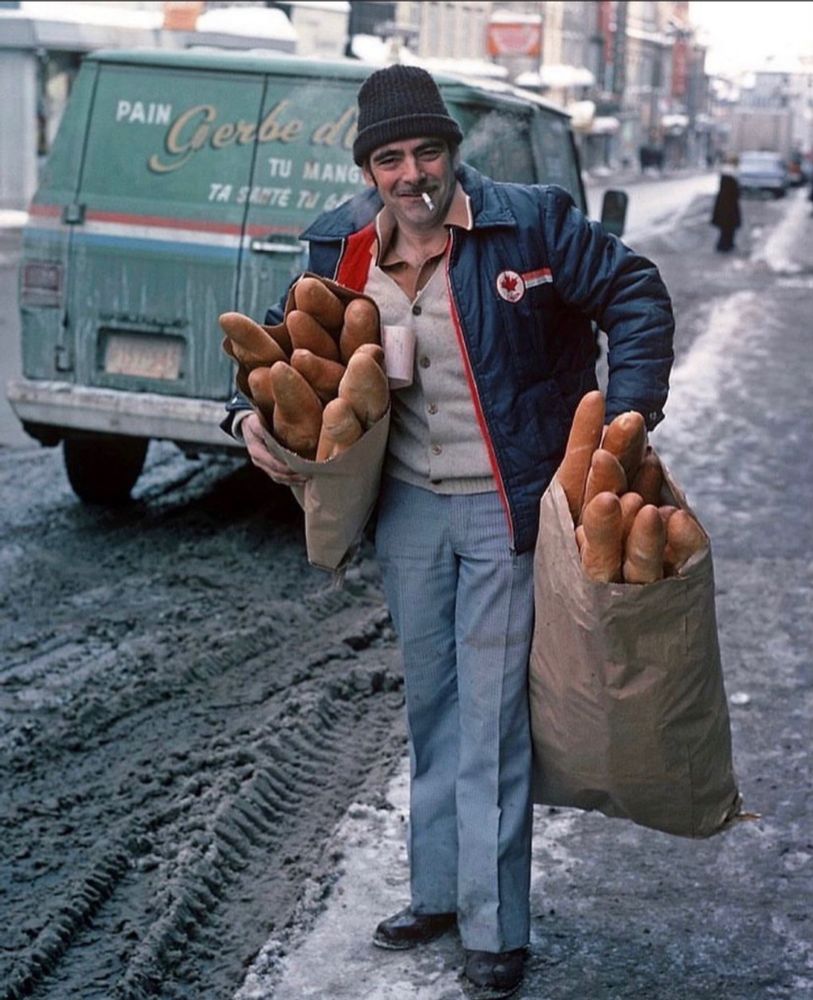
you have been visited by "Le Boulanger Quebecois"
repost to receive his blessing
01.07.2025 10:25 — 👍 4243 🔁 1693 💬 67 📌 104
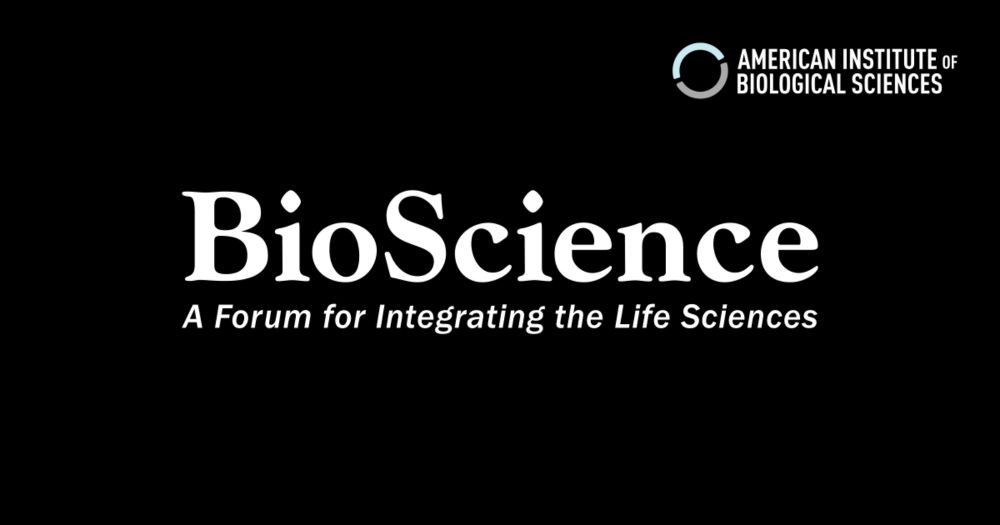
Biodiversity science and biosurveillance are fellow travelers
The failure to meet the Aichi targets to alleviate global biodiversity decline (Nature 2020) was a wake-up call to the biodiversity monitoring community (T
🦠🌿🐦🧪 How can biodiversity monitoring help global efforts in disease surveillance?
With ✨ fantastic ✨ colleagues from @viralemergence.org and the @geobon.org working group on One Health, we try to identify three key lessons for the future.
🧵 A short thread!
academic.oup.com/bioscience/a...
30.06.2025 13:07 — 👍 34 🔁 21 💬 1 📌 1
Poor as a mouse every morning
Rich as a cat every night
25.06.2025 14:28 — 👍 4 🔁 2 💬 0 📌 0
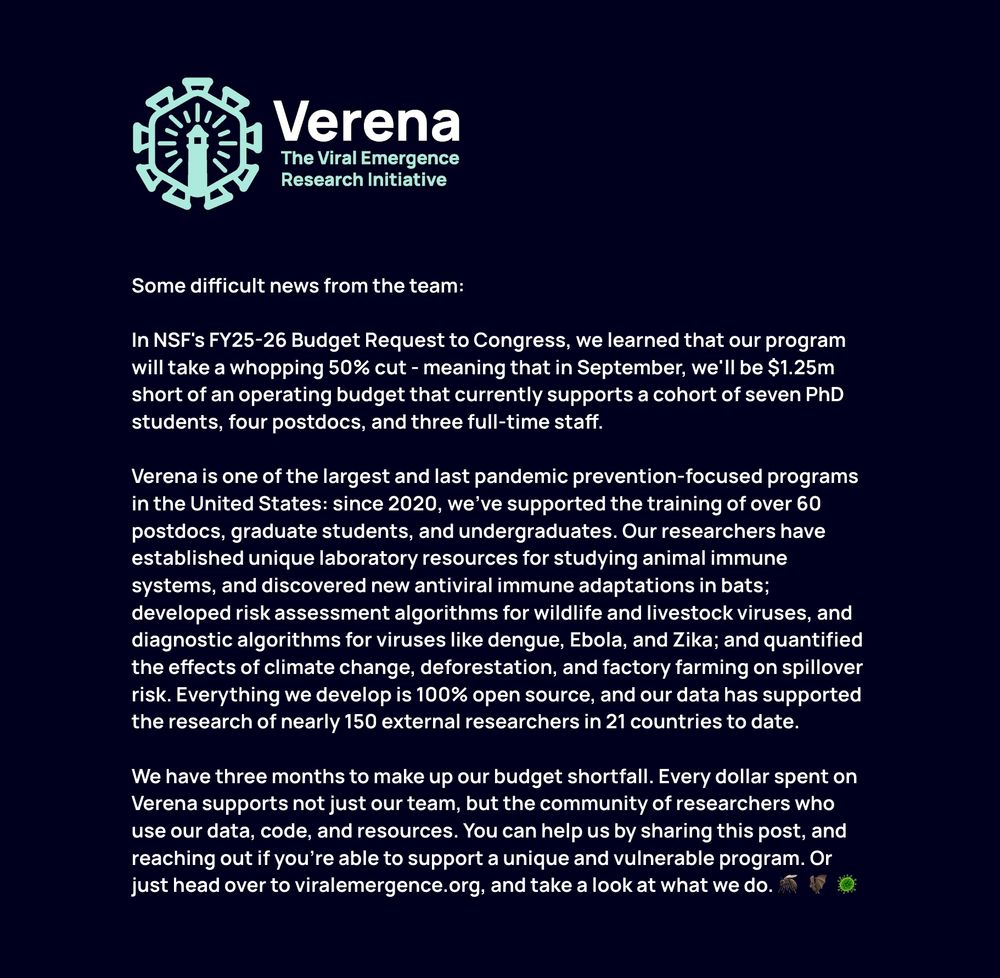
Some difficult news from the team:
In NSF's FY25-26 Budget Request to Congress, we learned that our program will take a whopping 50% cut - meaning that in September, we'll be $1.25m short of an operating budget that currently supports a cohort of seven PhD students, four postdocs, and three full-time staff.
Verena is one of the largest and last pandemic prevention-focused programs in the United States: since 2020, we've supported the training of over 60 postdocs, graduate students, and undergraduates. Our researchers have established unique laboratory resources for studying animal immune systems, and discovered new antiviral immune adaptations in bats; developed risk assessment algorithms for wildlife and livestock viruses, and diagnostic algorithms for viruses like dengue, Ebola, and Zika; and quantified the effects of climate change, deforestation, and factory farming on spillover risk. Everything we develop is 100% open source, and our data has supported the research of nearly 150 external researchers in 21 countries to date.
We have three months to make up our budget shortfall. Every dollar spent on Verena supports not just our team, but the community of researchers who use our data, code, and resources. You can help us by sharing this post, and reaching out if you're able to support a unique and vulnerable program. Or just head over to viralemergence.org, and take a look at what we do. 🦟 🦇 🦠
An update from the team on the uncertain future of our program and the impact of NSF budget cuts. Please share and reach out 🦠
02.06.2025 12:08 — 👍 134 🔁 104 💬 1 📌 14

2022 Release - North American Breeding Bird Survey Dataset (1966-2021)
The 1966-2021 North American Breeding Bird Survey (BBS) dataset contains avian point count data for more than 700 North American bird taxa (species, races, and unidentified species groupings). These data are collected annually during the breeding season, primarily in June, along thousands of randomly established roadside survey routes in the United States and Canada. Routes are roughly 24.5 miles (39.2 km) long with counting locations placed at approximately half-mile (800-m) intervals, for a total of 50 stops. At each stop, a citizen scientist highly skilled in avian identification conducts a 3-minute point count, recording all birds seen within a quarter-mile (400-m) radius and all birds heard. Surveys begin 30 minutes before local sunrise and take approximately 5 hours to complete. Routes are sampled once per year, with the total number of routes sampled per year growing over time; just over 500 routes were sampled in 1966, while in recent decades approximately 3000 routes have been sampled annually. No data are provided for 2020. BBS field activities were cancelled in 2020 because of the coronavirus disease (COVID-19) global pandemic and observers were directed to not sample routes. In addition to avian count data, this dataset also contains survey date, survey start and end times, start and end weather conditions, a unique observer identification number, route identification information, and route location information including country, state, and BCR, as well as geographic coordinates of route start point, and an indicator of run data quality.
The 2022 release is here, in case others need it web.archive.org/web/20220705...
31.05.2025 18:58 — 👍 1 🔁 0 💬 0 📌 0
It looks like Breeding Bird Survey data has disappeared from ScienceBase. I've found a copy of the 2022 version on the Internet Archive, but I'm curious if anyone downloaded the most up to date data before the administration change?
31.05.2025 18:46 — 👍 5 🔁 2 💬 1 📌 0
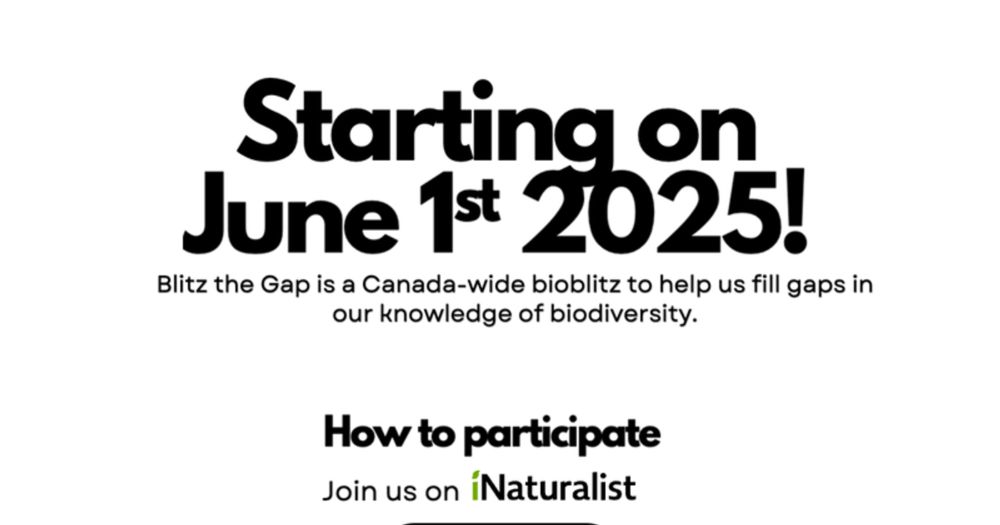
Blitz the Gap 2025
One week until Blitz the Gap (www.blitzthegap.org) starts - a Canada-wide event to fill biodiversity data gaps with iNaturalist! @laura-pollock.bsky.social
26.05.2025 16:09 — 👍 7 🔁 7 💬 1 📌 0
There were no new ways to understand the world, only new days to set our understanding against.
14.05.2025 20:28 — 👍 4 🔁 1 💬 0 📌 1
🐾 #CSEE2025 Workshop Highlight 🐾
"Interpretable machine learning for species distribution modelling"
💻 Discover how to use reproducible ML tools to tackle diverse ecological questions!
🔗 Register here: event.fourwaves.com/scee2025/reg...
09.05.2025 14:29 — 👍 4 🔁 5 💬 1 📌 0
What kind of animal
Needs to smoke a cigarette?
Grass in the pasture
Is sharper than a bayonette
Sometimes a pony
Sometimes a pony
Sometimes a pony gets depressed
08.05.2025 23:28 — 👍 14 🔁 1 💬 0 📌 0
Boy wants a car from his dad
Dad says, "First, you got to cut that hair"
Boy says, "Hey, Dad, Jesus had long hair"
And Dad says, "That's right, son, Jesus walked everywhere"
29.04.2025 08:28 — 👍 12 🔁 2 💬 0 📌 0
only if the title is: okay, this is epic
23.04.2025 22:04 — 👍 1 🔁 0 💬 0 📌 0
People gotta synchronize to animal time
18.04.2025 23:28 — 👍 2 🔁 1 💬 0 📌 0
i should get this guy to write my NSERC grants for me
18.04.2025 14:58 — 👍 2 🔁 0 💬 0 📌 0
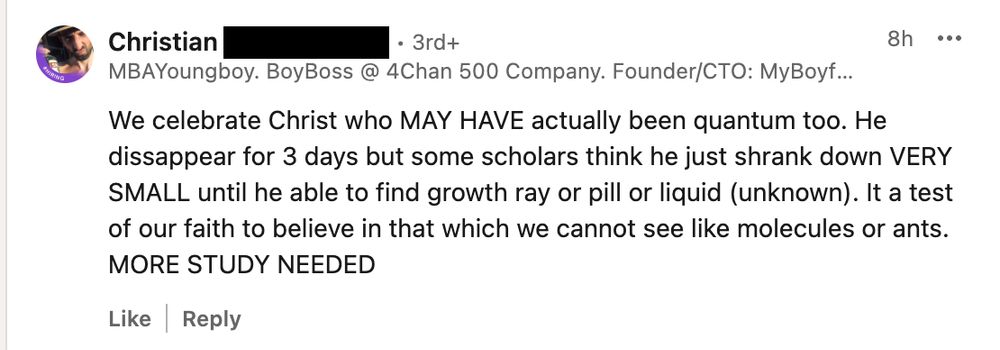
A LinkedIn comment with text: "We celebrate Christ who MAY HAVE actually been quantum too. He dissappear for 3 days but some scholars think he just shrank down VERY SMALL until he able to find growth ray or pill or liquid (unknown). It a test of our faith to believe in that which we cannot see like molecules or ants.
MORE STUDY"
learning interesting things on LinkedIn
18.04.2025 14:47 — 👍 4 🔁 0 💬 1 📌 0
All our hardships were just yardsticks then, you know
14.04.2025 20:28 — 👍 9 🔁 5 💬 0 📌 0
Bartender says, "Hey, we don't serve robots"
And the robot says, "Oh, but someday you will"
08.04.2025 14:28 — 👍 10 🔁 2 💬 0 📌 0
calmly staring out the window, imagining a world where market manipulation is illegal
07.04.2025 14:30 — 👍 2 🔁 0 💬 0 📌 0
word for math typesetting as an indicator of quality simply does not miss
03.04.2025 13:15 — 👍 3 🔁 0 💬 0 📌 0
at least i don't have to care about my us credit score anymore. and at the end of the day, isn't that what counts?
02.04.2025 22:15 — 👍 3 🔁 0 💬 0 📌 0
really feel like domain researchers have latched on to the concept of "AI" right as the bubble starts to pop
29.03.2025 00:31 — 👍 5 🔁 1 💬 1 📌 0
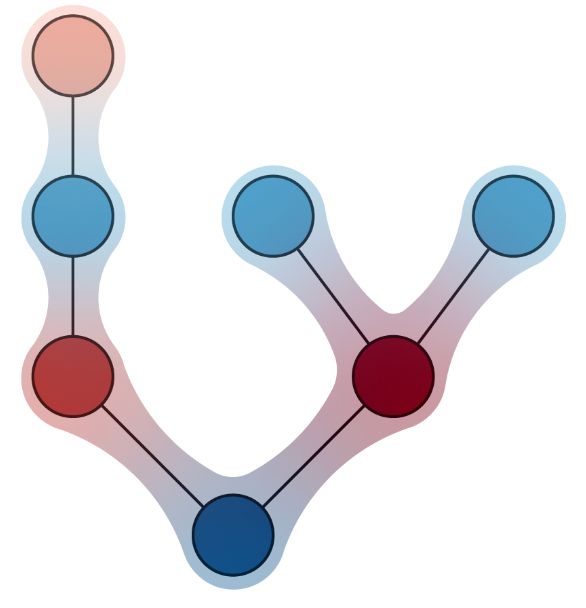
New paper! (arxiv.org/abs/2503.14093) I haven’t been this excited about one in a while, and I think the theory @mhab.bsky.social develops here will be a big step forward for the field. Why? Let me explain 🧵...
19.03.2025 13:53 — 👍 31 🔁 15 💬 1 📌 2
A Julia toolkit for species distribution data
New preprint: a toolkit for species distribution modelling, in #JuliaLang. The result of many years of work with fantastic people including @gabdans.bsky.social and @mdcatchen.bsky.social - a quick thread 🧪🌏
ecoevorxiv.org/repository/v...
18.02.2025 17:24 — 👍 43 🔁 15 💬 3 📌 0
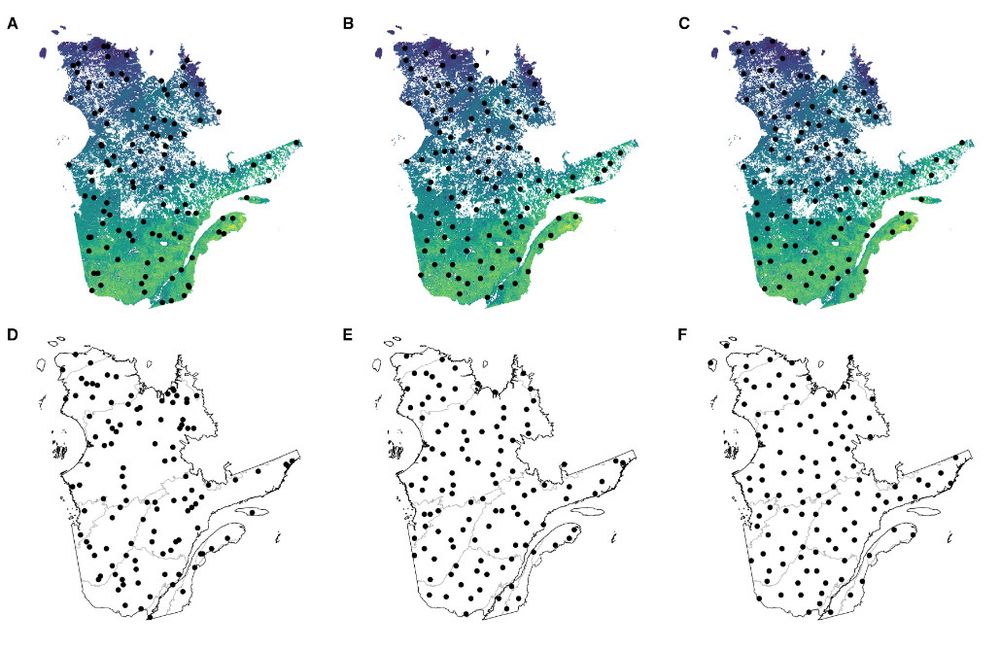
Some postdoc work up now up as a preprint! ecoevorxiv.org/repository/v... Choosing sites for monitoring biodiversity is critical for robust inference - so which algorithm should you use to pick sites? We found similar performance for algos and outline the features that might influence your decision.
12.02.2025 16:39 — 👍 23 🔁 6 💬 1 📌 0
One thing about me is that I will fight Nazis until I’m six feet in the ground.
24.01.2025 01:24 — 👍 151391 🔁 19525 💬 4275 📌 1998
We are the British Ecological Society Macroecology & Macroevolution Special Interest Group. We run the annual #BESMacro conference and will gladly repost papers and opportunities of interest to our members!
PhD Student at Carleton University (Ottawa, Canada)
https://antofuller.github.io/
Canadian scientist living in Norway. Associate professor at the Norwegian University of Life Sciences, all 🐟 but especially salmonids, evolutionary ecology, aquatic ecology, Arctic, fisheries, eDNA, life-history, food-web, intraspecific variation.
Population genetics, molecular ecology, sex evolution, marine biology.
Greenland Institute of Natural Resources
PhD student Mayfield Lab, UniMelb. Community ecology, spatial stuff, networks and lots of small plants.
Organiser @pop-bio.bsky.social
she/her
PhD @cbehav.bsky.social, Konstanz 🐦 Trying to track birds with computer vision 🇭🇰
https://alexhhchan.odoo.com/
Scientific Curator of Seed Conservation @ntbgarden.bsky.social, Affiliate Graduate Faculty in Botany @ U Hawaii, Deputy Chair @IUCN Seed Conservation Specialist Group. Ph.D. from @nhmdk.bsky.social. #Iamabotanist
Using data, transparency and accountability to stop 🌳deforestation and 🏞️nature loss.
Former BBC journo now communications lead at www.globalcanopy.org
Also on https://www.linkedin.com/in/darrenjamesmckenzie
Assistant Professor at University of Toulouse, Ecole d'ingénieurs de Purpan. Soil ecologist interested in the impact of global change on biodiversity and functions.
my two accomplishments here are that i invited AOC and i started the first-ever Hellthread • kyliebytes.com
Evolutionary biologist @KU_Leuven. #Adaptation #Plasticity #Speciation #Genomics #Beetles #Butterflies #Daphnia.
https://bio.kuleuven.be/eeb/sv/
Professora de botânica
Ecóloga de plantas, epífitas vasculares e florestas nebulares
Tdah das ideias
(Macro)evolutionary biologist • postdoc @OxUniEarthSci
from fossils, phylogenies and theory to community assembly and diversification trends
CS PhD student at UT Austin in #NLP
Interested in language, reasoning, semantics and cognitive science. One day we'll have more efficient, interpretable and robust models!
Other interests: math, philosophy, cinema
https://www.juandiego-rodriguez.com/
Economic historian @UoGuelph w broad social science & historical interests: population health, First Nations demography, mobility, inequality & lives of the incarcerated 🇨🇦🇦🇺🇳🇿🏴
Editing Asia-Pacific Econ History Rev & directing https://thecanadianpeoples.com.
#MachineLearning editor at @iopp-mlresearch.bsky.social (@ioppublishing.bsky.social). Theoretical chemist. LEGO fan. #DFT #compchem #chemistry #DogsofCompChem #Quantum
Proud member of #ChemSky
Personal+work account (all views my own)
📍Buffalo, NY
Entomology, paleontology, evolutionary ecology, science communication | currently a postdoctoral fellow at the Okinawa Institute of Science and Technology
Anti-cynic. Towards a weirder future. Reinforcement Learning, Autonomous Vehicles, transportation systems, the works. Asst. Prof at NYU
https://emerge-lab.github.io
https://www.admonymous.co/eugenevinitsky
Assistant Prof. at UC San Diego. Helping people write better software.
Assistant professor - University of Trieste
Plants, functional traits, abiotic stress tolerance








